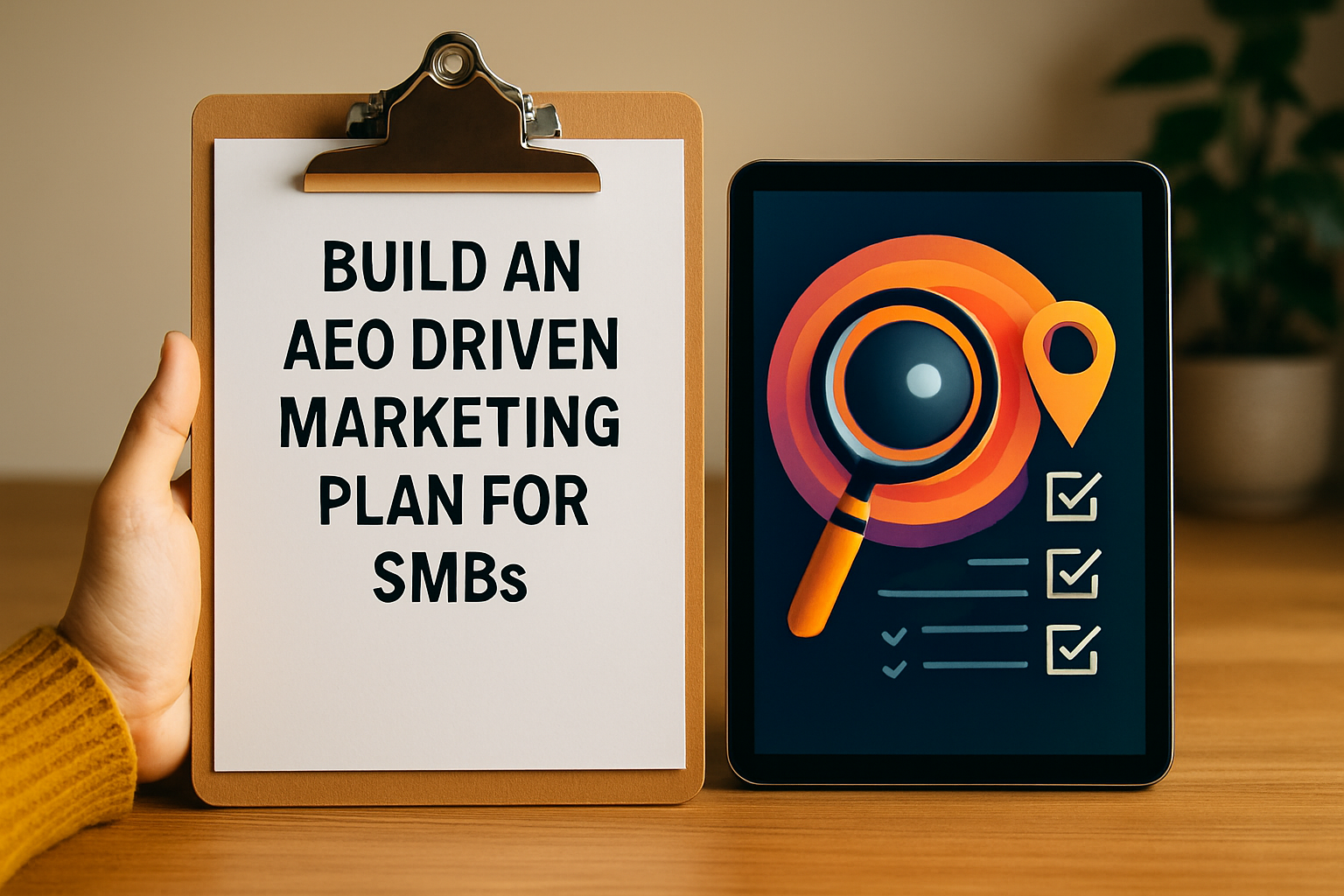How to Boost Lead Conversion for Your Business Success

Every business wants more leads, but just getting attention is not enough. Companies that respond to leads within an hour are seven times more likely to qualify them, according to Harvard Business Review. Most teams waste big conversion opportunities by missing out on quick, strategic actions. What surprises people is that making a few small changes to your follow-up and website can unlock a flood of new customers—and it starts with understanding what really holds your visitors back.
Table of Contents
- Step 1: Analyze Your Current Lead Generation Process
- Step 2: Optimize Your Website For Conversions
- Step 3: Create Compelling Calls To Action
- Step 4: Implement Effective Follow-Up Strategies
- Step 5: Test And Refine Your Conversion Tactics
Quick Summary
| Key Point | Explanation |
|---|---|
| 1. Analyze lead generation data comprehensively | Examine all channels to identify strengths and weaknesses in your current lead generation process. |
| 2. Optimize your website for immediate conversion | Ensure a clear and compelling website design that makes it easy for visitors to engage with your business. |
| 3. Create persuasive calls to action | Design calls to action that address specific pain points and generate a sense of urgency for potential leads. |
| 4. Implement prompt follow-up strategies | Respond to potential leads quickly with personalized communications to foster engagement and trust. |
| 5. Continually test and refine conversion tactics | Use A/B testing to assess and improve your approach based on user feedback and performance metrics. |
Step 1: Analyze Your Current Lead Generation Process
Setting the foundation for successful lead conversion begins with a comprehensive analysis of your existing lead generation strategies. Understanding where your current process succeeds and falls short provides critical insights that will guide targeted improvements and maximize your business growth potential.
Mapping Your Current Lead Acquisition Landscape
Start by creating a detailed overview of every channel and touchpoint through which potential customers currently discover and interact with your business. This includes examining your website traffic sources, social media engagement, email marketing performance, referral networks, and any offline marketing activities. Tracking these diverse entry points reveals patterns in customer acquisition that might otherwise remain hidden.
Utilize analytics tools like Google Analytics to generate comprehensive reports that break down visitor demographics, interaction duration, and conversion rates across different platforms. Pay special attention to metrics such as:
- Traffic volume from each marketing channel
- Conversion rates per acquisition source
- Average customer engagement time
- Bounce rates on key landing pages
These data points will help you understand which marketing efforts are most effective and where potential improvements can be made. For instance, if you notice high traffic but low conversion rates on a specific landing page, this signals an opportunity to refine your messaging or redesign the page’s user experience.
Diagnostic Assessment and Improvement Strategy
Once you have collected and analyzed your lead generation data, conduct a systematic evaluation of your current approach. Look for bottlenecks in your sales funnel where potential customers might be dropping off. Are there specific stages where engagement diminishes? Are your call-to-action statements compelling enough? Are your lead capture forms too complex or intrusive?
According to research from the U.S. Small Business Administration, regularly reviewing marketing and sales processes helps businesses identify high-performing channels and optimize resource allocation. This diagnostic approach transforms raw data into actionable strategic insights.
Remember that lead generation is an iterative process. The goal is not to achieve perfection immediately but to establish a continuous improvement cycle. By systematically analyzing, testing, and refining your approach, you create a dynamic lead generation system that adapts to changing market conditions and customer preferences.
Step 2: Optimize Your Website for Conversions
Website optimization serves as a critical gateway to transforming casual visitors into qualified leads. Your website represents more than a digital brochure it functions as an active sales platform designed to capture and nurture potential customer interest through strategic design and compelling user experience.
Begin by critically examining your website’s visual hierarchy and user navigation pathways. The first three seconds a visitor spends on your site are crucial in determining whether they will engage further or abandon the page. Streamline your design to ensure immediate clarity about what your business offers and how potential clients can take action.
Creating a Conversion-Focused Website Architecture
Carefully craft landing pages that speak directly to your target audience’s specific pain points and desires. Your homepage and key service pages should feature clear, concise messaging that addresses potential customer challenges and presents your solution as the ideal resolution. Use persuasive language that emphasizes benefits rather than simply listing features.
Improve website load speed as a fundamental conversion optimization strategy. Slow-loading pages dramatically increase bounce rates and signal unprofessional performance. Leverage tools like Google PageSpeed Insights to analyze and enhance your website’s performance across desktop and mobile platforms. Compress images, minimize complex scripts, and prioritize content loading to create a smooth user experience.
Implement strategically placed call-to-action buttons that stand out visually and create a sense of urgency. These conversion elements should be prominent, using contrasting colors and compelling text that encourages immediate engagement. Examples include “Get Your Free Consultation,” “Unlock Your Solution Now,” or “Start Transforming Your Business Today.”
According to Usability.gov, conducting systematic usability testing ensures your website effectively guides visitors toward desired actions. This means regularly reviewing user interaction patterns, testing different design variations, and continuously refining your digital interface to remove potential friction points.
Consider incorporating trust signals throughout your website. These might include client testimonials, industry certifications, security badges, and transparent contact information. Such elements reassure potential leads about your business’s credibility and professionalism. A website that looks trustworthy converts more effectively than one that appears generic or uncertain.
Finally, ensure your website is fully responsive across all devices. With increasing mobile internet usage, a design that adapts seamlessly to smartphones, tablets, and desktops is no longer optional but essential. Test your site thoroughly on multiple screen sizes and platforms to guarantee a consistent, user-friendly experience that keeps potential leads engaged and moving through your conversion funnel.
Below is a summary table of common website optimization actions, their purposes, and the benefits they offer to enhance lead conversion.
| Optimization Action | Purpose | Key Benefit |
|---|---|---|
| Streamline visual hierarchy | Make important content easily accessible | Improves user engagement |
| Enhance load speed | Reduce page loading times on all devices | Reduces bounce rates |
| Implement clear calls to action | Motivate visitors to take specific actions | Increases conversion opportunities |
| Add trust signals | Establish credibility and alleviate concerns | Boosts user trust |
| Ensure full mobile responsiveness | Provide seamless experience on smartphones and tablets | Expands reach and retention |
| Conduct usability testing | Identify and fix user experience friction points | Optimizes conversion pathways |
Step 3: Create Compelling Calls to Action
Calls to action represent the critical bridge between potential customer interest and actual conversion. These strategic prompts transform passive website visitors into engaged leads by providing clear, motivating pathways for next steps. Crafting exceptional calls to action requires understanding your audience’s psychology and designing messages that resonate deeply with their specific needs and desires.
Start by recognizing that effective calls to action go far beyond simple button text. They are strategic communication tools that articulate value, create urgency, and address potential customer hesitations. Your messaging must be concise, direct, and focused on the tangible benefits customers will receive by taking immediate action.
Designing Persuasive Conversion Triggers
Understand the emotional and rational motivations driving your target audience. Each call to action should speak directly to a specific pain point or aspiration. Instead of generic phrases like “Click Here,” develop more compelling language that highlights the transformative potential of your offering. Phrases such as “Unlock Your Business Potential” or “Stop Wasting Time Start Growing” create a sense of opportunity and forward momentum.
Visual design plays a crucial role in call to action effectiveness. Color psychology, placement, and design elements can significantly influence user interaction. Choose contrasting colors that stand out from your website’s standard palette, ensuring these conversion buttons are impossible to overlook. Position them strategically where users naturally scan content, typically near compelling value propositions or after explaining key benefits.
Personalization dramatically increases call to action performance. Segment your audience and create targeted messaging that speaks directly to different customer personas. A startup founder might respond differently to a call to action compared to an established business owner. By tailoring your language and design to specific audience segments, you increase the likelihood of conversion.
According to Usability.gov, systematic testing helps refine user interaction strategies. Implement A/B testing to experiment with different call to action variations. Test elements like:
- Specific wording
- Button color and size
- Placement on the page
- Accompanying visual elements
- Emotional versus rational messaging
The most successful calls to action eliminate perceived risk and create a sense of immediate value. Include trust signals like money-back guarantees, free consultations, or low commitment first steps. Make taking action feel safe, simple, and potentially transformative for the potential customer.

Remember that calls to action are not one-size-fits-all solutions. Continuously monitor performance metrics, gather user feedback, and be prepared to iterate. Your goal is creating a dynamic, responsive system that adapts to changing customer preferences and market dynamics.
Step 4: Implement Effective Follow-Up Strategies
Successful lead conversion hinges on strategic and timely follow-up processes that transform initial interest into committed customer relationships. Your approach to engaging potential leads can make the critical difference between a lost opportunity and a long-term business partnership. The moments immediately following a lead’s initial contact are pivotal in establishing trust and demonstrating your commitment to solving their specific challenges.
Develop a structured follow-up system that balances professional communication with personalized attention. This means creating a systematic approach that responds quickly, provides value, and guides potential customers through their decision-making journey. Automated tools can help streamline this process, but they must be implemented with a human touch that feels genuine and responsive.
Crafting a Responsive Lead Nurturing Framework
Speed becomes a crucial factor in lead conversion. Rapid response times signal professionalism and demonstrate your business’s commitment to customer needs. Aim to reach out to potential leads within the first hour of their initial contact. This might involve setting up automated email responses followed by personal outreach, ensuring no potential customer feels overlooked or forgotten.
Personalization transforms generic follow-up communications into meaningful interactions. Segment your leads based on their specific interests, industry, or the specific service they inquired about. Develop targeted communication sequences that address their unique pain points and demonstrate a deep understanding of their potential challenges. This approach shows that you view them as more than just another sales opportunity.
Utilize multiple communication channels to increase your chances of engagement. While email remains important, integrate text messaging, direct phone calls, and even personalized video messages into your follow-up strategy. Each channel offers unique advantages and can help you connect with different types of potential customers who have varying communication preferences.
According to Harvard Business Review, companies that respond to leads within an hour are seven times more likely to qualify those leads. This statistic underscores the critical nature of timely and strategic follow-up.
Implement a comprehensive tracking system to monitor follow-up interactions. This might include:
- Detailed lead interaction logs
- Tracking of communication attempts
- Notes on specific customer needs and preferences
- Scheduled follow-up touchpoints
The most effective follow-up strategies treat each lead as a unique individual with specific needs and potential. Avoid generic, one-size-fits-all approaches that feel impersonal and disconnected. Instead, craft a nuanced approach that demonstrates your genuine interest in solving their specific business challenges.
Continuously refine your follow-up process by gathering feedback and analyzing conversion rates.
The following table outlines key elements for an effective lead follow-up process, including actions, recommendations, and their intended impact on lead conversion.
| Follow-Up Element | Recommended Action | Intended Impact |
|---|---|---|
| Speed of response | Respond within the first hour | Increases likelihood of qualification |
| Personalization | Tailor communications to lead interests/needs | Builds trust and fosters engagement |
| Channel diversity | Use email, phone, text, and video | Reaches leads on their preferred platform |
| Tracking interactions | Maintain detailed logs of all communication attempts | Ensures consistent and informed outreach |
| Scheduled touchpoints | Plan follow-up intervals | Prevents leads from falling through cracks |
| Feedback collection | Gather user input to refine follow-up strategy | Continuous improvement of conversion rate |
Step 5: Test and Refine Your Conversion Tactics
Transforming lead generation from a static process to a dynamic, continuously improving system requires systematic testing and strategic refinement. Conversion optimization is not a one-time event but an ongoing journey of understanding and adapting to your audience’s evolving preferences. By implementing a structured approach to testing, you create a feedback loop that constantly enhances your marketing and sales strategies.
Establish a comprehensive testing framework that goes beyond surface-level modifications. This means developing a methodical approach to experimenting with different elements of your lead generation and conversion process, carefully tracking results, and making data-driven decisions that incrementally improve performance.
Creating a Scientific Approach to Conversion Optimization
Begin by identifying key conversion points throughout your customer journey. These might include website landing pages, email marketing campaigns, call-to-action buttons, or follow-up communication strategies. Each of these touchpoints represents an opportunity for systematic improvement. Select one element at a time to test, ensuring you can clearly attribute any changes in performance to specific modifications.
Implement A/B testing as your primary optimization strategy. This involves creating two distinct versions of a marketing element and comparing their performance. For instance, you might test two different headline variations, color schemes for your call-to-action button, or email subject lines. Use tools like Google Optimize to manage these experiments and collect precise data about user interactions.
According to Nielsen Norman Group, effective A/B testing requires careful experimental design and statistical rigor. This means setting clear hypotheses, ensuring statistically significant sample sizes, and avoiding premature conclusions based on limited data.
Develop a comprehensive tracking system to monitor your testing results. This might include:
- Conversion rate changes
- User engagement metrics
- Time spent on specific pages
- Click-through rates
- Cost per acquisition
The most successful businesses view conversion optimization as a continuous learning process. Each test provides insights that inform future strategies, creating a compounding effect of improvement over time. Be prepared to challenge your existing assumptions and remain open to surprising results that might contradict your initial expectations.
Remember that testing is not just about finding what works but understanding why it works. Dive deep into user behavior, collecting qualitative feedback through surveys, user interviews, and direct customer interactions. This holistic approach provides context to your quantitative data, helping you develop more nuanced and effective conversion strategies.
Maintain a disciplined approach to testing. Set clear timelines for each experiment, establish minimum statistical significance thresholds, and create a systematic process for implementing successful variations across your marketing ecosystem. Consistent, methodical testing will gradually transform your lead conversion process from a hit-or-miss approach to a precision-driven growth engine.

Ready to Transform Your Lead Conversion and Accelerate Growth?
Are you tired of losing potential customers during key moments in your sales process? The article explained how crucial it is to analyze your current lead generation methods, optimize your website for conversions, and implement effective follow-up. These pain points can stall your growth and drain your resources. Now imagine if you could solve these challenges automatically while cutting your administrative workload.

Authority Echo gives you a single platform to automate lead capture, nurture prospects in real time, and simplify scheduling so your team never misses a follow-up. Unlike fragmented systems, Authority Echo lets you streamline everything from payment processing and review management to AI-driven chat and workflow automation. Stop struggling with slow response times or low conversion rates. Visit Authority Echo to discover how easy it is to implement the same best practices discussed in this guide. Start optimizing your lead conversion process today and see measurable results faster. Take your business to the next level now.
Frequently Asked Questions
How can I analyze my current lead generation process effectively?
Start by mapping out all channels and touchpoints where potential customers interact with your business, including your website, social media, and email marketing. Use analytics tools to break down visitor demographics and engagement metrics, and identify patterns that highlight strengths and weaknesses in your process.
What steps should I take to optimize my website for increased conversions?
Begin by enhancing your website’s design and user experience, focusing on a clear message that resonates with your target audience. Ensure fast loading times and implement strategically placed calls to action, as these improvements can significantly increase engagement and conversion rates.
How do I create compelling calls to action for my business?
Develop calls to action that highlight specific benefits and urgency, avoiding generic phrases. Use persuasive language, design contrasting buttons, and personalize messaging for different audience segments to improve your chances of converting interest into action.
What effective follow-up strategies can I implement to improve lead conversion?
Establish a structured follow-up framework that prioritizes speed and personalization, aiming to respond to leads within the first hour. Use multiple communication channels, and segment leads based on their interests to provide tailored information that addresses their specific needs.
How can I continuously test and refine my lead conversion tactics?
Implement a systematic approach to testing different elements of your lead generation process, such as landing pages and email campaigns. Use A/B testing to measure changes in performance, and focus on gathering both quantitative and qualitative feedback to inform future improvements.
What should my key performance indicators (KPIs) be for tracking lead conversion success?
Focus on measurable KPIs such as conversion rates, average engagement time, and response times for follow-ups. Regularly review these metrics to identify areas for improvement, aiming for at least a 10-15% increase in conversions over a set period as you refine your strategies.




